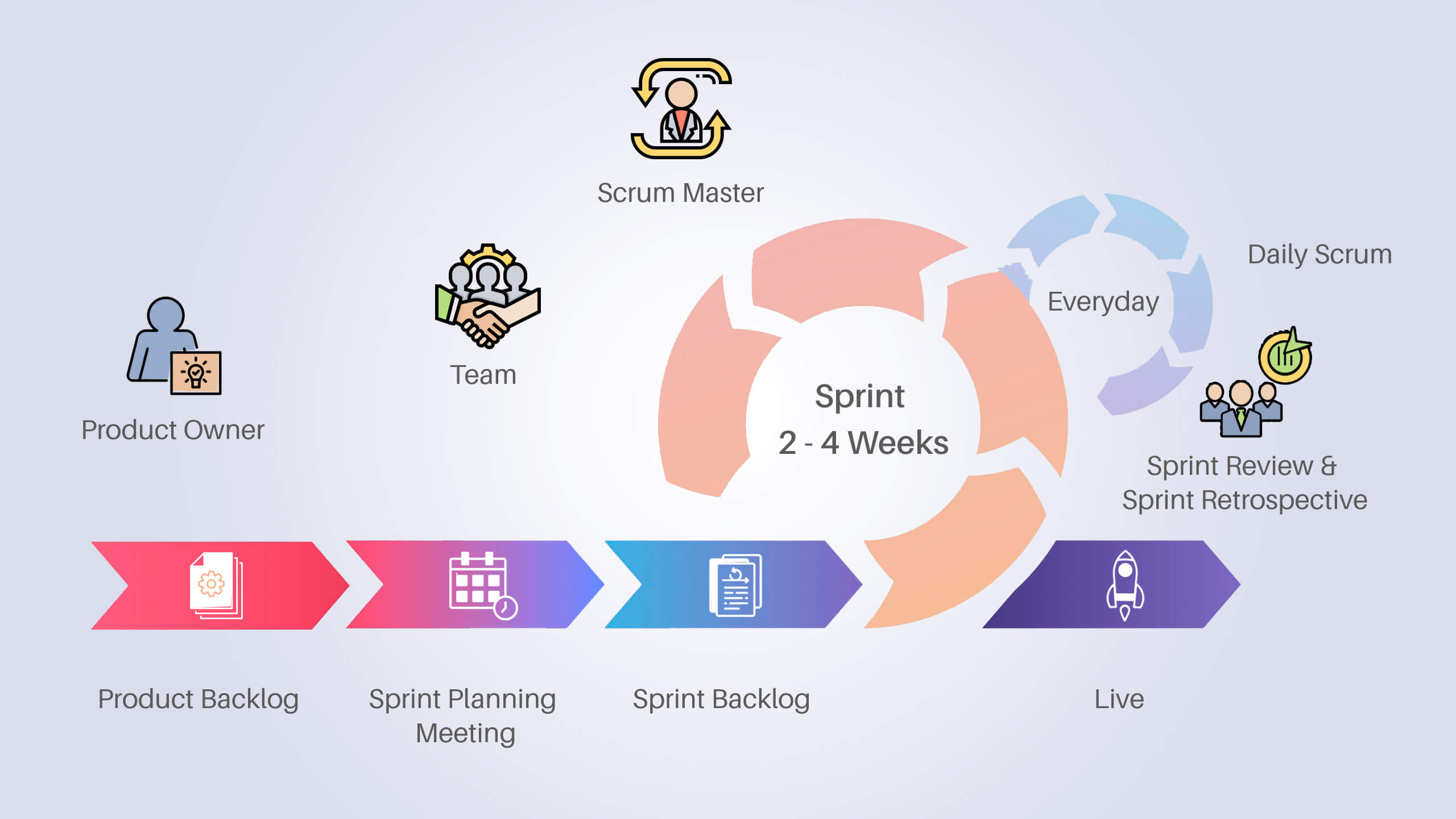The traditional waterfall method works only if everything is well planned while developing a software application, but that is hardly the case most of the time. When clients approach us, they have only ideas, which are not even validated at that time. As a result, the scope of development is not final, and the scope of investment is extremely limited.
In the traditional method, the scope of development is created through the initial discussions, but at the time of these discussions, none of them-the developer or the client-have a concrete idea about the final shape. So the product developed through the scope defined in such a way, through initial discussions and without involving the customer in the development process, was unable to produce the desired result.
Agile is the answer to this situation. When scope can be changed till the desired result is achieved and the primary goal is to reach the market with a working prototype, investing a minimum amount, Agile development is what we follow for the best result. Scrum is the framework based on which we have created our development model, but we have taken inspiration from other methods like Lean and Crystal.

Core Development Process
-
Begin with MVP:
MVP, or minimum viable product ideation, is the first step where the process starts with the client’s initial concept. The team works on research and analysis and then starts developing on an approved core concept.
-
Allocation of Stakeholders of project:
Identification of roles and people in the next stage. Main stakeholders of the project like -Product Owner, Scrum Master, and Development Team are identified.
-
Product Backlog Creation:
A product backlog is the source of all authoritative items that a team works on. It will consist of user stories, tasks, infrastructure changes, etc. The Product Owner maintains the Product Backlog throughout the project.
-
Sprint Planning and Sprint Backlog Creation:
A sprint is a specified timeframe for creating a meaningful part of the software. Planning happens on the very first day of every sprint including all stakeholders, where the Product Owner presents the features to be delivered in the sprint and the Development Team determines the tasks to be done.
-
Daily Scrum Meeting and Project Tracking:
The team meets every day to discuss the job done, the job planned for the day, and impediments that may arise. Scrum Master leads the meetings. Task Boards and Charts are used to track project progress.
-
Sprint Review and Product Demonstration:
Review meetings happen at the end of a sprint. The Development Team demonstrates features to the Product Owner and the Product Backlog is updated according to the outcome.
-
Retrospective:
Sprint retrospective meetings aim to analyze and share the significant events of a sprint and learn from them. It marks a sprint as completed, and planning for the next sprint is initiated.
-
Release & next phase:
Integration of the builds from multiple sprints and validation of them creates a release which can be the whole or part of the MVP. Once MVP is created, the next phase of product enhancement starts and goes through the same process.

Once MVP is ready and reaches the market, clients will be very likely to implement changes based on valuable market feedback and analysis. We partner with our clients throughout the process of scaling with our DevOps culture by developing, testing, and continuous integration to ensure reliable software releases.



